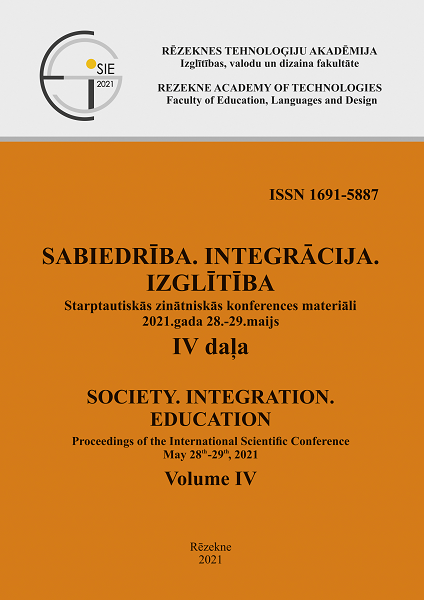GENERATIVE CREATING OF SACRAL SPACE:LATVIAN ANCIENT AND CONTEMPORARY PLACES OF WORSHIP
DOI:
https://doi.org/10.17770/sie2021vol4.6202Keywords:
architecture, evolution, generative language, human life quality, place of worship, sacral space, urban environmentAbstract
The Balts received God’s counsel and energy and regained health in energetically strong places but the Latvian worldview formed on the thousands of years was encoded in the Lielvārde belt, which is Latvian womenfolk costume’s element. Bishop (1199–1229) Albert founded the town of Riga for the Riga Bishopric centre on the right bank of the Daugava.It was the four-part Riga Old Town semicircledivided by two main streets as the cross.Soon after the Great Fire in 1214, the construction ofthe Riga Cathedralbegan tocreate sacral urban space in areasof the Old Town and the New Town of Riga (in nova civitate Rige).Now, eastwards of Lielvārde, landscape artist Shunmyō Masuno from Japan has visualized the Garden of Destiny, where people obtainsolace to the past, strength to the present and inspiration to follow dreams in the future. Through this set of relationships, architecture maintains the cosmological connection and dialogue with all the scales of the World. Research object: Latvian places for the worship of God.Research goal: analysis of Latvian urban sacral space. Research problem: common and different features of the sacral space of the Latvians and other nations have been little studied. Research novelty: detailed studies of generative design of sacral spaces and contemporary places of worship in Latvia. Research methods: analysis of archive documents, cartographic and urban planning materials, a study of published literature and inspection of sacral places in nature.
Downloads
References
Colabella, E. (2013). Imaginative constrains for generative chain. In XVI Generative Art Conference Proceedings. Milan: Domus Argenia Publisher, 104–113.
Colabella, E. (2015). Poetic logic. In XVIII Generative Art Conference Proceedings. Milan: Domus Argenia Publisher, 65–80.
Manzolli, J. (2018). Multimodal architecture of the Ode to Christus Hypercubus. In XXI Generative Art Conference Proceedings, Milan: Domus Argenia Publisher, 171–182.
Neumann, W. (1912). Der Dom zu St. Marien in Riga. Riga: G. Löffler.
Ozola, S. (2018). Latvian garden of destiny– the place for inspiration to implement dreams. In XXI Generative Art Conference Proceedings, Milan: Domus Argenia Publisher, 397–414.
Reeves, N. (2017). Origin point: harmonic echoes of mineral cosmology (Mende Cathedral). In XX Generative Art Conference Proceedings, Milan: Domus Argenia Publisher, 288–319.
Soddu, C. (2016). The discovering persistent deep memory in generative design. In XIX Generative Art Conference Proceedings, Milan: Domus Argenia Publisher, 15–35.
Spārītis, O. (2015). Esejas par Latvijas sakrālo kultūru. Rīga: Jumava.


